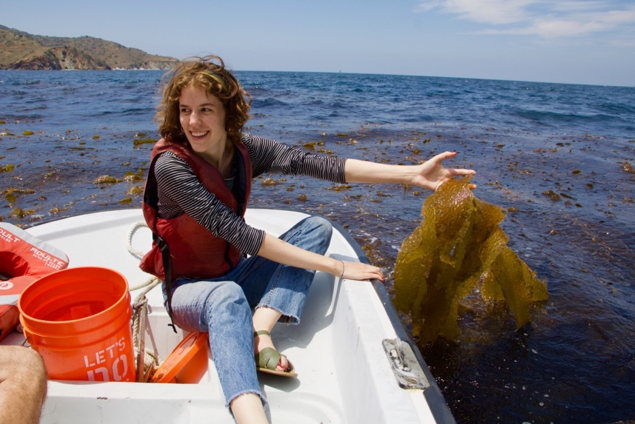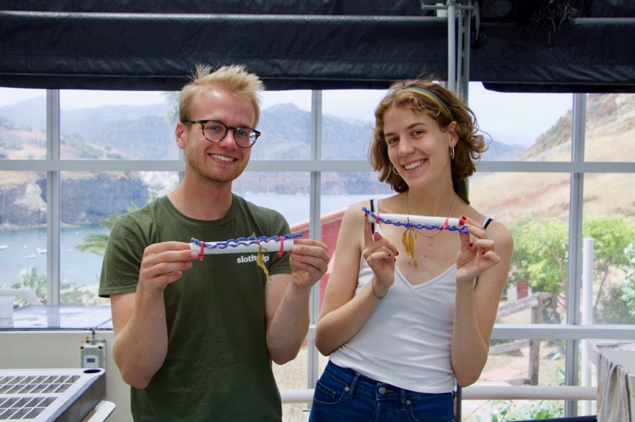By: Jean Sabety
Hello from the island! I’m Jean Sabety, an undergraduate working with the Kelp Team in the Nuzhdin lab at USC.
We are working on improving open ocean kelp farming with the end goal of making an algae biofuel! I am working on two projects concurrently this summer:
I am working on the first project with Jose Diesel, we are looking at the effects that phytohormones (plant hormones) have on Giant Kelp (Macrocystis pyrifera) growth. Despite being morphologically similar, animals and fungi are more closely related than algae are to plants! Despite this fact, we are curious to see if plant hormones, which are commonly used to increase growth in agriculture, will improve kelp growth. If one of the hormones does have a positive effect on kelp growth, it could be used to decrease kelp hatchery time, the amount of time it takes for baby kelp to be strong enough to survive transfer into the ocean. This will make kelp farming faster and more efficient!
For my second project I am working with Kelly DeWeese and we are attempting to extract RNA from Giant Kelp. Kelp farms have an unfortunate history of invasiveness, but growing sterilized kelp would mitigate this problem. Giant Kelp has a unique life cycle, it alternates between a diploid sporophyte stage and a microscopic, haploid, gametophyte phase. Interestingly, only the sporophyte is reproductive. Gary Molano, a graduate student in the lab, came up with an idea to exploit this part of the life cycle and sterilize the kelp. If we can identify which genes allow for reproduction, we can farm kelp that has naturally occurring nonfunctional mutations in these genes. Identifying the reproductive genes can be done by comparing the genetic expression between the sporophyte and gametophyte, this is called differential expression analysis. In order to figure out which genes are being expressed, RNA needs to be extracted and sequenced. Unfortunately, it is extremely difficult to extract RNA from kelp tissue, so this summer I am working toward optimizing a protocol that allows for high quality RNA extraction.
When I’m not working in the lab, I spend my time swimming, hiking, kayaking, cliff jumping, and enjoying island life in general!



